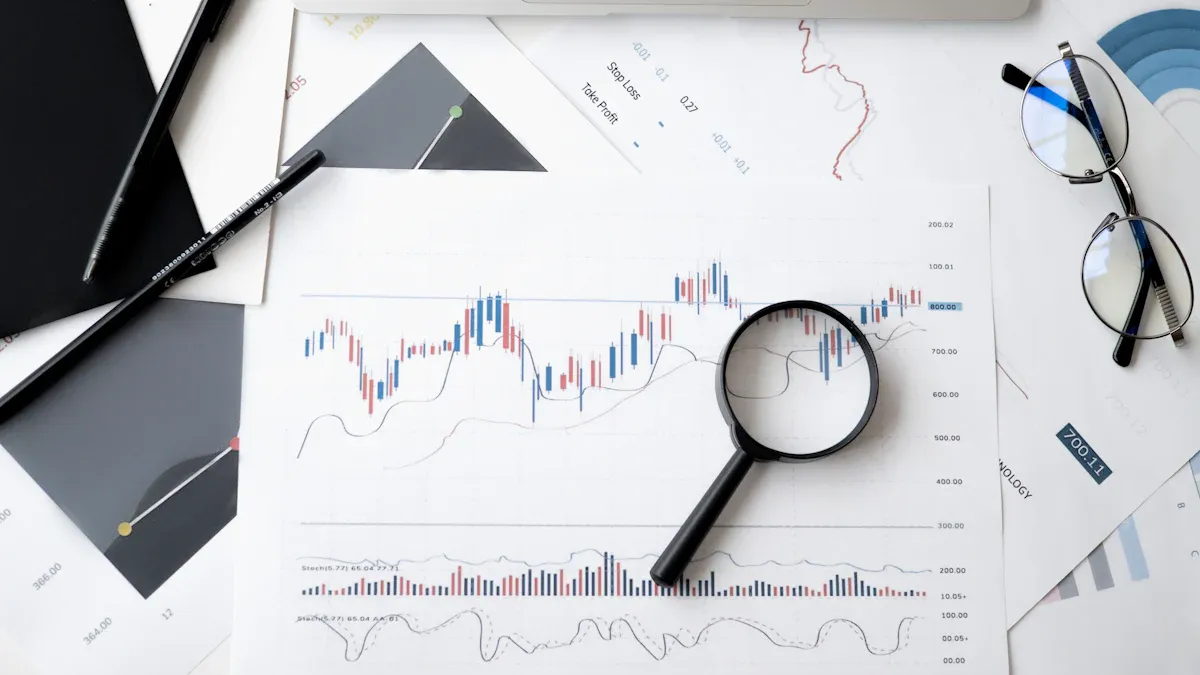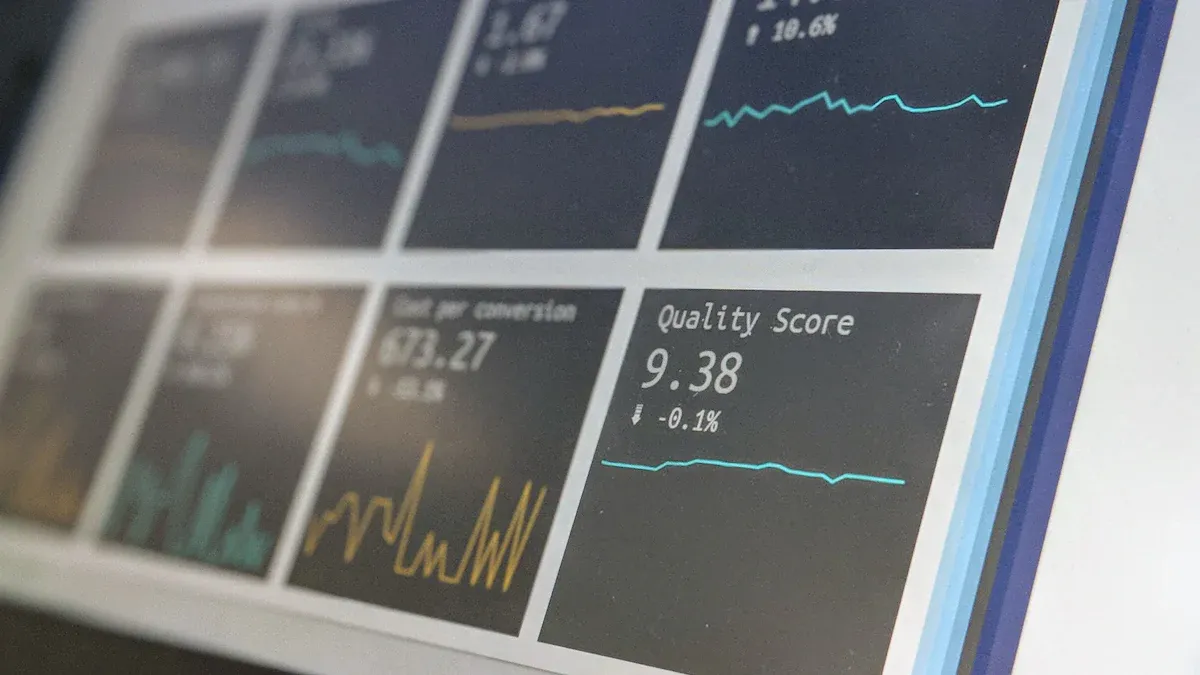MSA Explained: Understanding Measurement System Analysis for Quality Control

Measurement System Analysis (MSA) checks if your measurements are correct. It makes sure the data you gather is reliable and steady. This is important to keep quality under control. Without MSA, mistakes in measuring might not be noticed. This can cause bad choices and uneven results. Tools like gage repeatability and reproducibility (%GRR) and distinct categories (ndc) test your system. For instance, %GRR should be under 10%, and ndc over 5. MSA also helps follow rules like ISO or IATF 16949. These rules ensure your work meets global standards.
What is Measurement System Analysis (MSA)?

Definition and Purpose
Measurement System Analysis (MSA) checks how well your measurement system works. It makes sure the data you collect is correct and steady. MSA finds mistakes in measurements and helps reduce differences. This improves the quality of your work.
The goal of MSA is to test your measurement system. It checks for accuracy, precision, and stability. For example:
Accuracy shows how close results are to the real value.
Precision checks if results stay the same in similar conditions.
Repeatability means one person gets the same result every time.
Reproducibility means different people get the same result.
Without MSA, mistakes in measurements can cause bad choices and uneven quality.
Key Parts of a Measurement System
A measurement system includes tools, methods, and people who collect data. To make it reliable, focus on these key parts:
Accuracy: How close measurements are to the real value.
Precision: How steady your results are.
Repeatability: One person getting the same result many times.
Reproducibility: Different people getting the same result.
Bias: The gap between the average result and the real value.
Linearity: Bias staying the same across the range of measurements.
Stability: Getting the same results over time.
Part | Meaning |
|---|---|
Accuracy | How close the average result is to the real value. |
Precision | How steady results are under the same conditions. |
Repeatability | One person getting the same result many times on the same item. |
Reproducibility | Different people getting the same result on the same item. |
Bias | The gap between the average result and the real value. |
Linearity | Bias staying the same across the range of measurements. |
Stability | Getting the same results over time when measuring the same thing. |
Role in Quality Control
MSA is very important for keeping quality under control. It makes sure your measurement system gives good data for smart decisions. By finding and fixing differences, MSA helps make processes more steady. For example, Gage Repeatability and Reproducibility (Gage R&R) studies check if your system is reliable. These studies show if your system works well for quality control.
Using MSA the right way helps you trust your data. This leads to better products, less waste, and happier customers.
Why Measurement Systems Analysis Matters in Quality Control
Making Sure Data is Correct and Trustworthy
Good quality control starts with correct and trustworthy data. MSA checks if your measurement system gives reliable results every time. It finds problems like bias or instability and helps fix them. For example, tools like Gage Repeatability and Reproducibility (Gage R&R) test if results stay the same. This makes sure the system works well no matter who uses it or when.
You can measure data improvements using tools and statistics. These include accuracy, precision, and Gage R&R. The table below explains some key terms:
Measure/Indicator | What It Means |
|---|---|
Accuracy | How close a measurement is to the real value. |
Precision | How similar repeated measurements are under the same conditions. |
Repeatability | Differences in results by the same person using the same tool. |
Reproducibility | Differences in results by different people using the same tool. |
Gage R&R | A way to check both repeatability and reproducibility of a system. |
Attribute Agreement Check | Tests if items are sorted into categories the same way every time. |
Using these tools ensures your data is correct and dependable, helping you make better choices.
Cutting Down on Measurement Differences
Differences in measurements can cause uneven results and lower product quality. MSA helps find and fix these differences. It looks at things like bias, linearity, and stability. Fixing these issues reduces mistakes and makes measurements more consistent.
Charts and graphs, like control charts or scatter plots, help track differences. Software like Excel or Minitab can also find problem areas. Reducing differences improves your system and makes processes more steady.
Helping You Make Smart Choices
Good decisions need good data. MSA makes sure your system gives high-quality data for smart choices. Studies show that accurate data stops mistakes that lead to bad decisions. Reliable systems also improve product quality and process performance.
The table below shows how MSA helps decision-making:
Source | Key Idea |
|---|---|
Quality-One | Correct data is key for decisions; mistakes can cause wrong choices. |
Lean Outside the Box | Reliable systems improve data quality for better decisions. |
Super Engineer | MSA finds measurement differences, improving products and processes. |
Simplilearn | MSA boosts accuracy and shows how errors affect processes. |
By using MSA, you can trust your data and make choices that improve quality control.
Conducting an MSA Study

Steps in the MSA Process
Doing an MSA study needs a clear plan. This ensures your system gives good data. Follow these steps to complete an MSA study:
Identify the Measurement System: List tools, methods, and people collecting data.
Select Samples: Pick parts that show all process differences.
Conduct the MSA Study: Have trained people measure the chosen samples using set rules.
Analyze Results: Check the data for accuracy, steadiness, and reliability.
Implement Improvements: Fix any problems found to make the system better.
Document Results: Write down what you learned and fixed for later use.
Each step helps your MSA meet quality rules like Six Sigma. For instance, choosing good samples shows real process changes. Checking results ensures the data is trustworthy.
Repeatability and Reproducibility (R&R)
Repeatability and reproducibility are key parts of an MSA study. They check if your system works the same every time.
Repeatability: Tests if one person gets the same result using the same tool.
Reproducibility: Checks if different people get the same result using the same tool.
A Gage R&R study looks at both repeatability and reproducibility. It shows how much your system varies. For example, repeatability might cause 1.3% of variation, and reproducibility 0.87%. These numbers mean the system works well and is dependable.
Analyzing and Interpreting Data
Studying MSA data needs good math tools to find useful details. Use these methods to understand your results:
Technique | Purpose |
|---|---|
Mean | Find the average of the data. |
Standard Deviation | See how much the data spreads out. |
Confidence Intervals | Guess the range where values will fall. |
Regression Analysis | Spot links between different factors. |
F-test | Compare how two groups vary. |
t-test | Compare the averages of two groups. |
For example, finding the mean and standard deviation shows the data's center and spread. Confidence intervals give a range for expected numbers. Regression analysis finds patterns. These tools make sure your system gives correct data for quality control.
Fixing Common Mistakes in Measurement Systems
Kinds of Mistakes (Bias, Linearity, Stability)
Mistakes in measuring can mess up data and cause bad choices. The main types are bias, linearity, and stability. Bias happens when the average result is always off from the real value. Linearity means bias changes across the range of measurements. Stability checks if results stay the same over time.
Errors in measurement systems happen because tools are not accurate. These mistakes can change how steady or precise the results are.
For example, a factory found their measurement mistakes were much bigger than the actual process range. This caused changes that made things worse instead of better. Finding these mistakes is key to making measurements more accurate.
Finding and Fixing Mistakes
To find mistakes, study the system using tools like Gage R&R. These tools check repeatability and reproducibility to find where problems come from. Mistakes can be grouped into three types:
Systematic mistakes: Errors that happen the same way every time.
Random mistakes: Errors that happen without a clear pattern.
Big mistakes: Large errors caused by people or broken tools.
Once you know the mistakes, fix them by calibrating tools, training workers, and setting clear rules. For instance, a company making building materials used MSA to find big errors. Fixing these stopped bad adjustments and improved their results.
Making the System Better
To improve the system, focus on reducing mistakes and making results more precise. Use math tools like regression analysis to find error patterns. Fixing these issues can lead to faster work, better results, and fewer defects.
Measure | What It Means | Example |
|---|---|---|
Yield rate | How many good parts are made from raw materials. | If 950 good items are made from 1,000 parts, the yield rate is 95%. |
Defect rate | How many bad parts are made compared to the total. | If 10,000 items are made and 200 are bad, the defect rate is 2%. |
A strong MSA gives accurate data, helping you make better choices. Fixing mistakes leads to big improvements in quality and control.
Practical Uses of MSA in Quality Control
Examples in Factories and Production
MSA is important for factories and production lines. It ensures measurements are correct and steady. For example, car part suppliers use MSA to meet strict quality rules. A big car company used MSA to fix measurement problems for a key part. This improved the part's quality. In Gujarat, India, small businesses used MSA to improve their tools. This led to better products and fewer mistakes.
MSA also helps service industries. It creates systems for customer surveys that give reliable results. Research teams use MSA to check tools and get accurate data. These examples show how MSA helps many industries keep quality steady.
Rules and Standards in Industries
Many industries follow strict rules for good measurement systems. For example, ISO and IATF 16949 need systems that are checked and reliable. MSA helps meet these rules by finding and fixing errors in measurements.
Important rules include:
%GRR (Gage Repeatability and Reproducibility): Must be below 10%.
NDC (Number of Distinct Categories): Must be above 5.
%GRR shows how much error comes from the system. NDC checks if the system can tell items apart. If NDC is under five, the system is not useful. Following these rules ensures your system gives good data for decisions.
Advantages for Quality Control
Using MSA has many advantages for quality control. Reliable systems give better data for smart decisions. MSA finds and fixes errors, reducing measurement problems. This keeps product quality steady and meets customer needs.
The table below lists MSA's main benefits:
Benefit | What It Means |
|---|---|
Better Data Quality | Reliable systems give correct data for good decisions. |
Fewer Measurement Errors | Fixing errors keeps product quality steady. |
Better Process Control | Reliable systems improve control and meet customer needs. |
Meets Industry Standards | Validated systems follow rules like ISO or IATF 16949. |
By using MSA, you can make your systems better and improve quality control.
FAQ
What does MSA do?
MSA checks if your measurement system gives correct and steady data. It finds mistakes and makes the system more reliable, which helps keep quality high.
When should you do an MSA study?
Do an MSA study when you add new tools, methods, or workers. Regular checks also keep your system accurate over time.
Can MSA work outside factories?
Yes, MSA is useful in healthcare, research, and service jobs. It helps collect good data, which is important for making smart decisions.
What tools are used in MSA?
Tools like Gage R&R studies, control charts, and software like Minitab are common. They help find and fix measurement system problems.
Why does repeatability matter in MSA?
Repeatability means one person using the same tool gets the same results. It shows your system works well under the same conditions.
See Also
Exploring QFD, FMEA, And DOE's Impact on Quality Control
Essential Tips for Choosing MES and WMS in 2025
The Advantages of CAE Analysis for Die Casting Design
Defining MOQ and Its Influence on RFQ Processes
Navigating CBAM: A Supplier's Guide to Sustainable Casting
About Hunan Puka
Established in 2016 and based in Hunan, China, with a liaison point in Berlin, we are a Tier 2 supplier for the automobile industry. We specialize in the production of customized aluminum die-casting parts designed for machines with a closing force ranging from 280 to 1250 tons, with subsequent manufacturing process CNC machining and surface treatment. Our commitment to quality is reflected in our accredited quality management system, certified by ISO9001:2015 and IATF16949:2016 standards.


